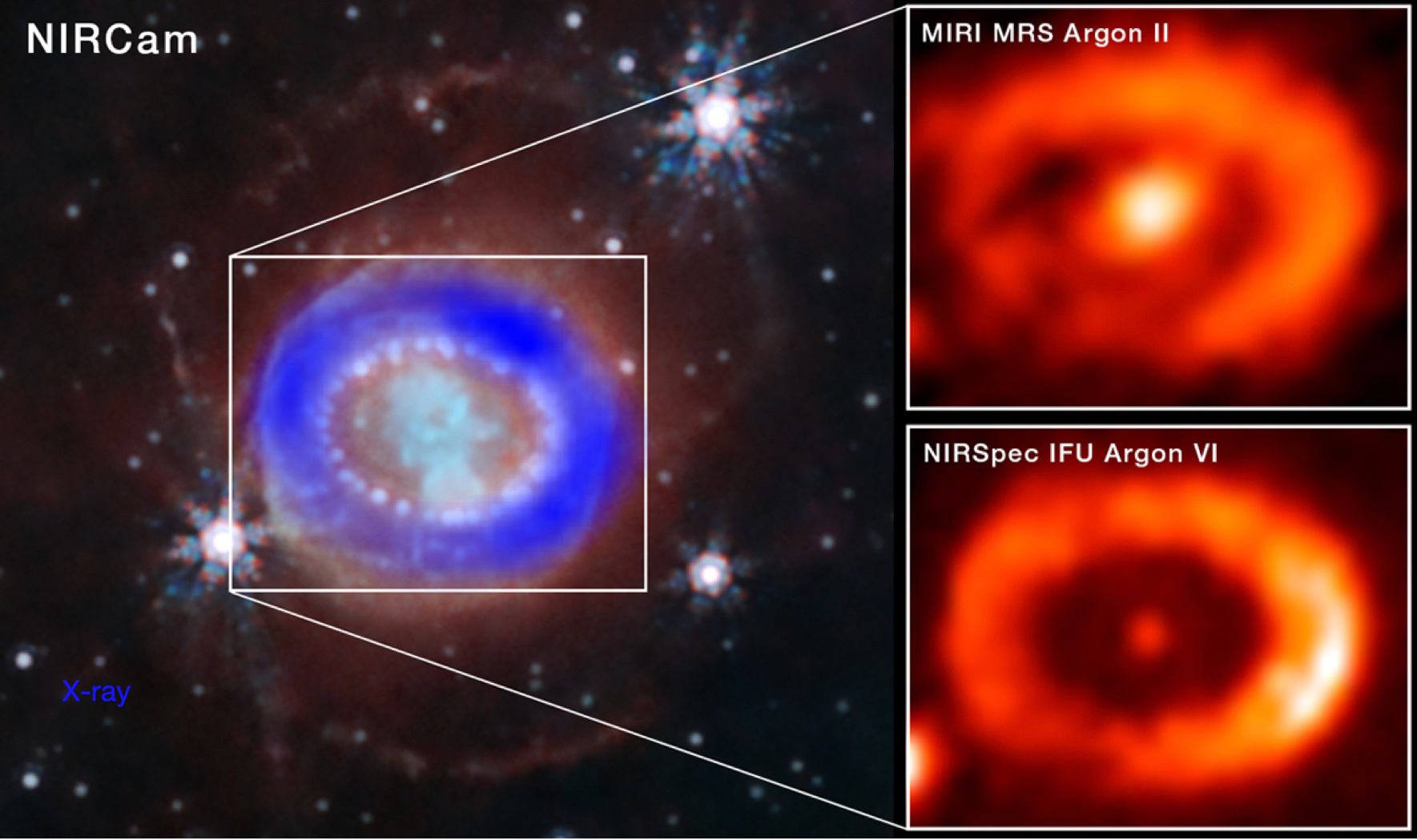
 Credit: NASA, ESA, CSA, STScI, Chandra X-ray Observatory, C. Fransson (Stockholm University), M. Matsuura (Cardiff University), M. J. Barlow (University College London), P. J. Kavanagh (Maynooth University), J. Larsson (KTH Royal Institute of Technology)
Credit: NASA, ESA, CSA, STScI, Chandra X-ray Observatory, C. Fransson (Stockholm University), M. Matsuura (Cardiff University), M. J. Barlow (University College London), P. J. Kavanagh (Maynooth University), J. Larsson (KTH Royal Institute of Technology)
The Collapsed Core of a Core-Collapse Supernova
The closest supernova to earth, SN 1987A, was discovered on February 24, 1987. The star that exploded was a blue supergiant located in the Large Magellanic Cloud, one of the satellite galaxies of the Milky Way. This was the first nearby supernova to occur in the modern age of astronomical technology, and so the explosion and its aftermath have been intensively studied by observatories on earth and in space in the 37 years since the star exploded. A supernova is an incredibly powerful explosion, powerful enough to eject a significant fraction of the star into interstellar space at velocities of millions of miles per hour. This fast moving ejecta blasts into the interstellar medium, producing an expanding shell of hot shocked gas at temperatures in excess of a million degrees, hot enough to produce substantial X-ray emission. The explosion begins when the core of the doomed star runs out of fuel and is crushed by the gravity of the outer layers of the star to extreme densities as high as those found in atomic nuclei, or even beyond. The collapsed core forms a relativistic compact object, like a neutron star, and scientists eagerly awaited to finally witness the birth of a neutron star up close. Observations obtained over more than 30 years, however, failed to show conclusive proof of the suspected neutron star's existence, though there was some indirect evidence obtained over the years. Now, the most direct evidence of the neutron star from the explosion of SN 1987A comes from new observations with JWST. The image above left shows a new image of SN 1987A from JWST, with X-ray emission from the X-ray emitting shocked gas at the leading edge of the blast, as seen by the Chandra X-ray Observatory, shown in blue. This image shows a confused fuzzy patch near the center of the blast wave. To better resolve individual sources, the right hand side of the image shows close-ups of the center of the supernova remnant in light produced by atoms of Argon. The image top right shows emission from Argon atoms that have lost only one of their 18 electrons. This image shows hint of a bright source near the center of the blast but lots of other extended emission too. To further clarify things, the image bottom right shows emission produced by Argon atoms that have lost five electrons. It takes a strong source of ionizing high-energy radiation to strip five electrons from Argon. This image clearly shows that the ionizing source is point-like and almost dead-center of the blast. The only reasonable conclusion is that the source of these high-energy photons is the long-sought collapsed core left behind by the supernova.
Published: March 4, 2024
<
HEA Dictionary ● Archive
● Search HEAPOW
● Other Languages
● HEAPOW on Facebook
● Download all Images
● Education ● HEAD
>

Each week the HEASARC
brings you new, exciting and beautiful images from X-ray and Gamma ray
astronomy. Check back each week and be sure to check out the HEAPOW archive!
Page Author: Dr. Michael F. Corcoran
Last modified Monday, 11-Mar-2024 14:21:21 EDT


